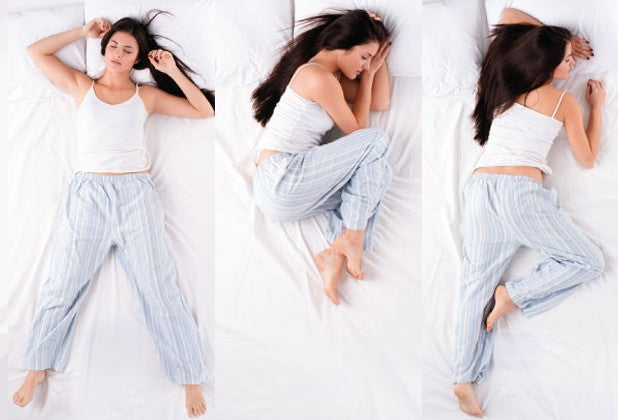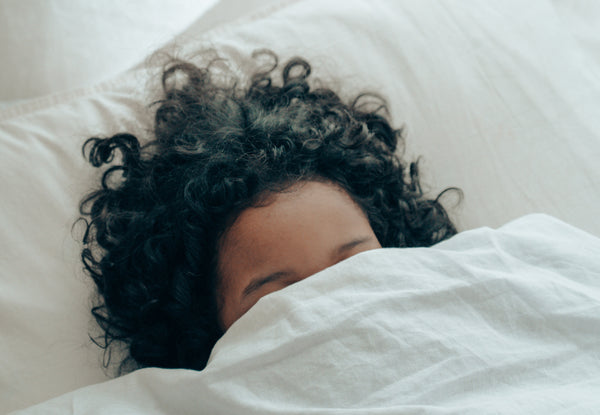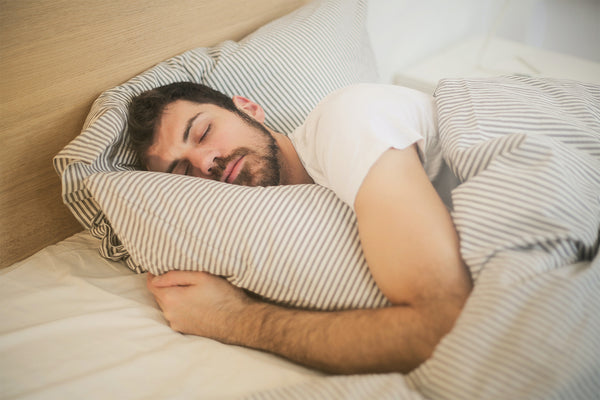A good night’s sleep is essential for your health, general wellbeing and productivity. Yet around 30% of New Zealanders sleep poorly, many waking up feeling tired, sore and stiff.
Researchers have identified two main reasons for this: sleeping on an old mattress, and bad sleeping positions. Both drastically affect the way you sleep.
It is nearly impossible to get a deep, restful sleep on a mattress that has lost its shape and support, which is why experts recommend that you replace your mattress every seven years.
In this article, we talk about the most common sleep positions and why some are better for your health than others. There’s good news if you always wake up tired and irritable too: you can train yourself to get a good night’s rest by adopting a better sleeping position.
Sleeping Position 1: Sleeping on Your Back
The best position to sleep in is on your back. Sleeping on your back means that three key areas of your body – your head, neck and spine – are in a neutral position and there is no extra pressure on them.
Back sleeping distributes the weight of your body evenly, which can also improve your posture as it aligns your spine and neck and relaxes your jaw.
But a word of caution for anyone considering becoming a back sleeper. Although sleeping on your back is recommended by experts, it may be a problem if you are a heavy snorer or have sleep apnea.
Sleeping Position 2: The Soldier
Not many people are Soldier sleepers - this position is characterised by lying on your back with both arms by your sides - like a guard on duty.
The Soldier position is definitely worth a try because it’s ideal for aligning your spine and neck, and can also reduce acid reflux and helps to minimise wrinkles while you sleep.
However, on your back in the Soldier position may lead to snoring or sleep apnea for some sleepers.
Sleeping Position 3: The Starfish
As the name suggests, the Starfish is when a person lays on their back with their arms and legs splayed out like a Starfish! This position is commonly used to avoid shoulder pain and keeps your head, neck and spine in a neutral position.
The Starfish position is good for a peaceful night’s sleep if you are in bed alone, but can be annoying for a partner because you’ll take up a lot of bed space.
Sleeping Position 4: The Foetal Position
Sleeping curled up like a baby in the foetal position is a great way to sleep on your side safely, and is also a good position for expecting mothers.
If you are pregnant, try a loose foetal position, sleeping on your left side with a hunched torso and bent knees. This improves circulation in your body and in the foetus while stopping your uterus from pressing against your liver, which is on your right side.
The Foetal position is also a good position for snorers, but can restrict breathing in your diaphragm and put extra pressure on your abdomen if you’re curled up too tightly. It can also leave you sore in the morning if you have arthritis in your joints or back. Try to keep your body as straight as possible in this position.
Sleeping Position 5: The Log
According to sleep experts, the Log is the second most popular sleeping position in New Zealand. In this position, sleepers rest on their side with legs extended straight down and arms tucked in. This position helps keep your spine straight and is extremely helpful for anyone suffering from back pain at night.
Sleeping on your left side helps with digestion, however, be aware that sleeping on your side can also cause nerve compression in your arms and legs, so make sure you’re not tightening your body too much.
Sleeping Position 6: The Yearner
The Yearner sleeping position is similar to the log, but the sleeper’s arms are stretched in front as if they’re reaching out for something or someone. It’s another sleep position that can help keep your spine aligned and minimise sleep apnea - but not ideal if you suffer from arthritis.
Sleeping Position 7: Side Sleeping
Most Kiwis sleep on their side - but that doesn’t mean it’s the best way to sleep. In fact, apart from causing premature wrinkles, side sleeping can cause everything from hip and shoulder pain to heartburn.
If you like side sleeping, remember that you need to keep your back as straight as possible. The best way to achieve that is to get the best mattress for a side sleeper, one that supports the curvature of your body while still embracing the pressure points of your shoulders and hips.
There is a tendency for side sleepers having shoulder pain, a common complaint from nearly all side sleepers. The pain is caused from too much pressure applied to the rotator cuff. The key to fighting shoulder pain is having the correct pillow height and arm position. Always use a pillow that provides good support for your neck and is the right height to keep your spine in alignment.
Sleeping Position 8: Stomach Sleeping
Sleeping or your stomach is often called front sleeping, the free-fall position or skydiving. We call it something else: trouble. As a front sleeper, you’re regularly putting strain on your back and spine because most of your weight is in the middle of your body.
It’s almost impossible to maintain a neutral spine when you’re in this position. You’re also more likely to wake up with aches and pains due to the pressure on your stomach muscles and joints in this position.
However, sleeping on your stomach can help with digestion and ease snoring - but we recommend that you try another sleeping position – like flipping over onto your back to take all of that pressure off your body.
Which Sleeping Position is Best?
Try any one of these sleeping positions for a better night’s sleep - but remember that if you’re still not feeling well rested, you can try one of our Winkl mattresses for 120 nights risk-free!
One of the best investments you can make to help your sleep is by buying a Winkl mattress: owned by two young Kiwis on a mission to give everyone a great night’s sleep at an affordable price.





